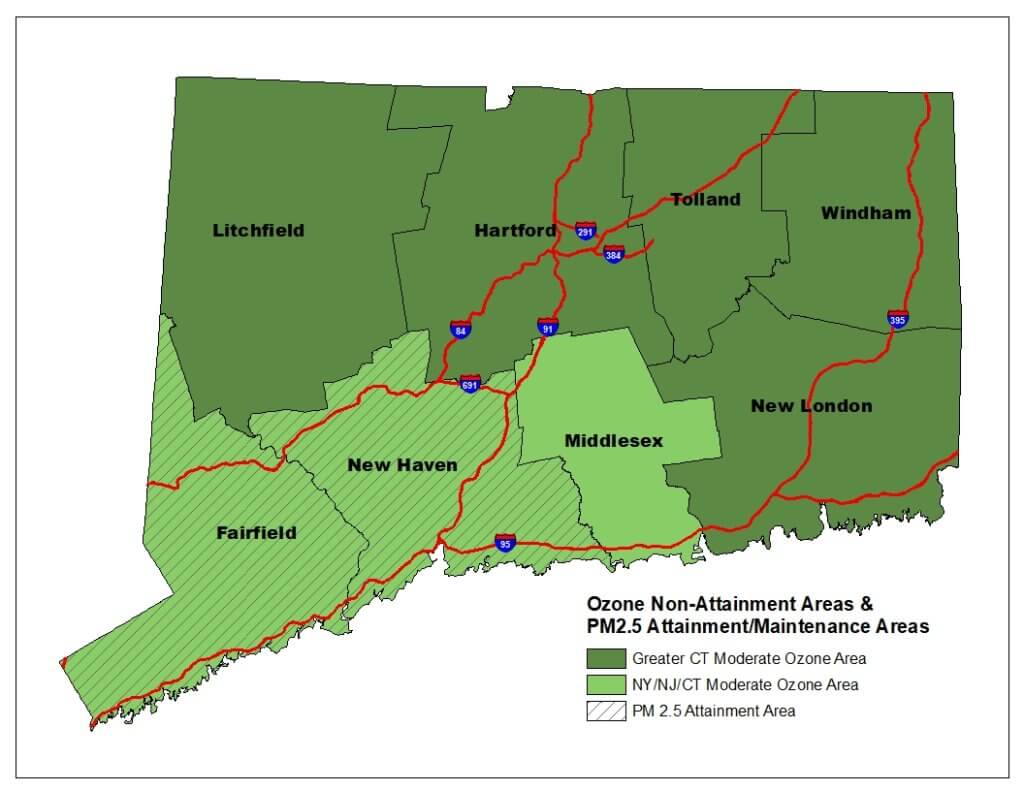Local transportation planning to meet national air quality standards
Air Quality Conformity
The Clean Air Act Amendments (CAAA) of 1990 recognized the major health risks from the nation’s air quality and authorized the US Environmental Protection Agency (EPA) to establish National Ambient Air Quality Standards (NAAQS) for various pollutants. Areas where air quality does not meet the NAAQS are designated as non-attainment. Connecticut Department of Energy and Environmental Protection (CTDEEP) is required, by law, to produce a State Implementation Plan (SIP) outlining how the NAAQS will be achieved in the state’s non-attainment areas.
The CAAA also recognized the major impacts transportation has on air quality. To help reduce how much transportation contributes to air quality issues, the nation’s metropolitan planning organizations (MPOs) are required to demonstrate that their plans, projects and program will not:
- Cause or contribute to any new violation of the NAAQS,
- Increase the frequency or severity of any existing NAAQS violations, or
- Delay timely attainment of the NAAQS or any required interim emissions reductions or other milestones in any area.
This process is referred to as Air Quality Conformity.
Non-Attainment Areas in Connecticut
Connecticut is divided into two non-attainment areas for the 8-hour ozone NAAQS and one non-attainment area for fine particulate matter (PM2.5) as follows:
- New York-Northern New Jersey-Long Island Ozone non-attainment area – Fairfield, New Haven and Middlesex counties; designated as “moderate” non-attainment.
- Greater Connecticut Ozone non-attainment area – Hartford, Litchfield, New London, Tolland and Windham counties; designated as “moderate” non-attainment.
- New York-New Jersey-Connecticut (NY-NJ-CT) PM2.5 non-attainment are; designated as PM2.5 attainment/maintenance.
The CTDOT conducts the emissions assessments for all Connecticut MPOs. The CTDOT analyses estimate baseline and future emissions from surface transportation sources based on projects in the current MTPs and TIPs, and compares the expected emissions to maximum allowable levels, known as emission “budgets.” Air Quality Conformity is determined if the estimated emissions resulting from the implementation of all projects in the MTPs and TIPs are less than established emission “budgets.”

